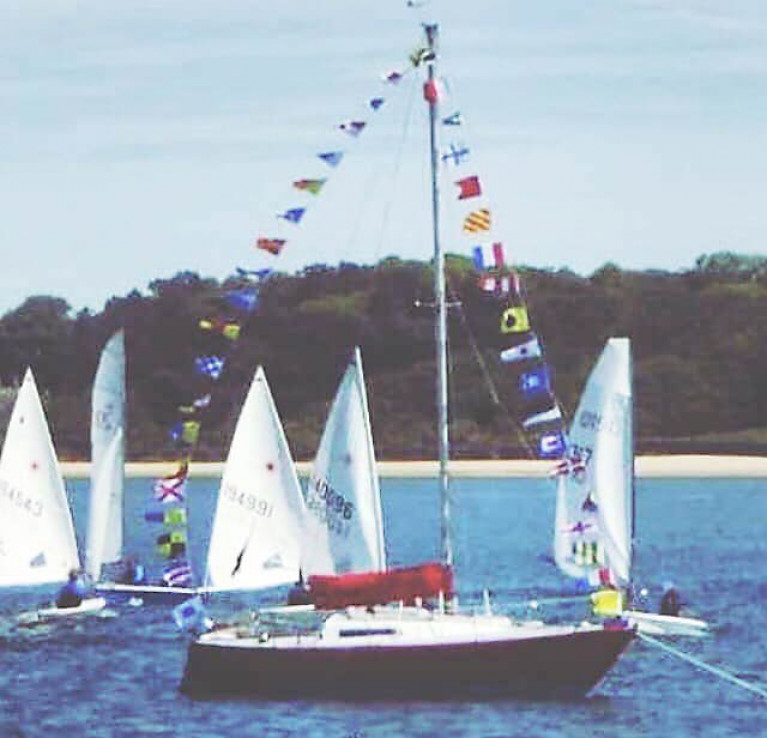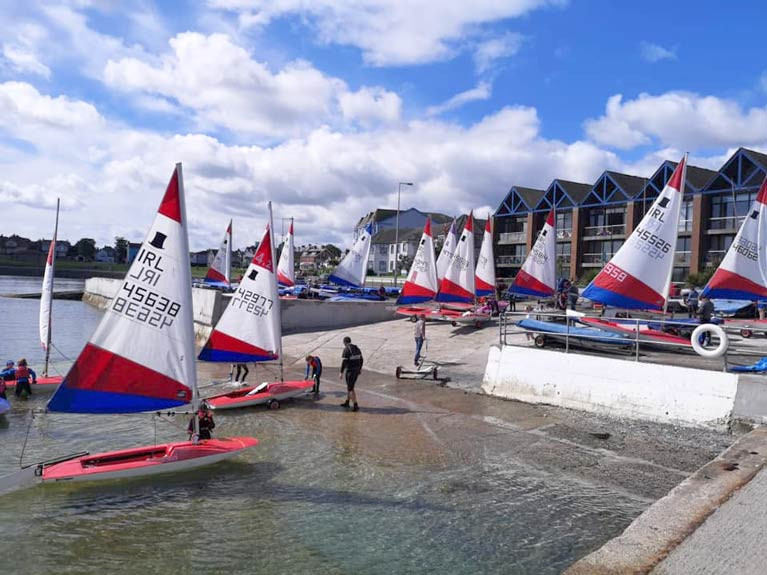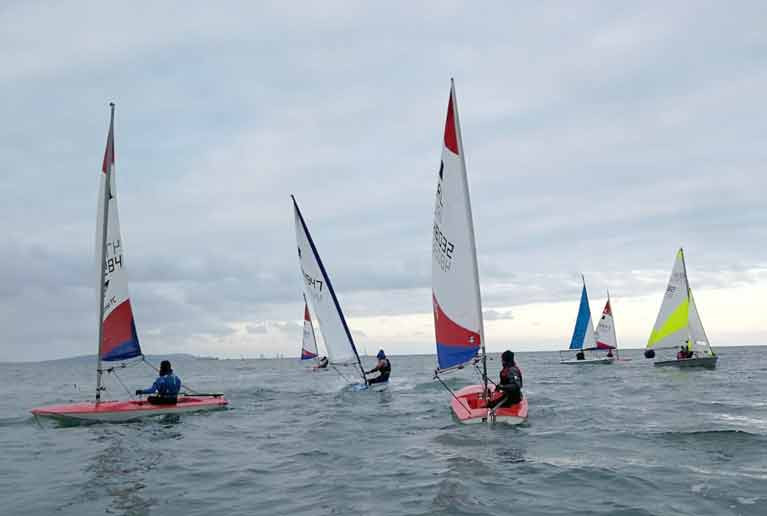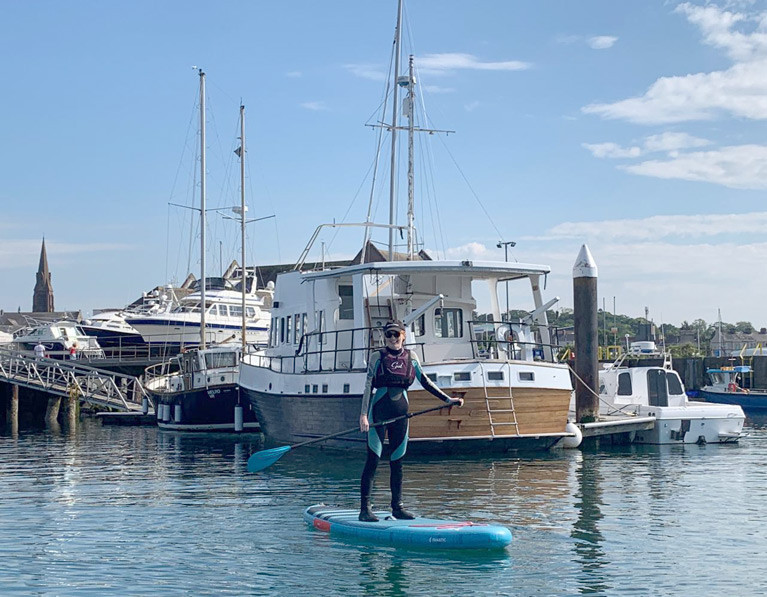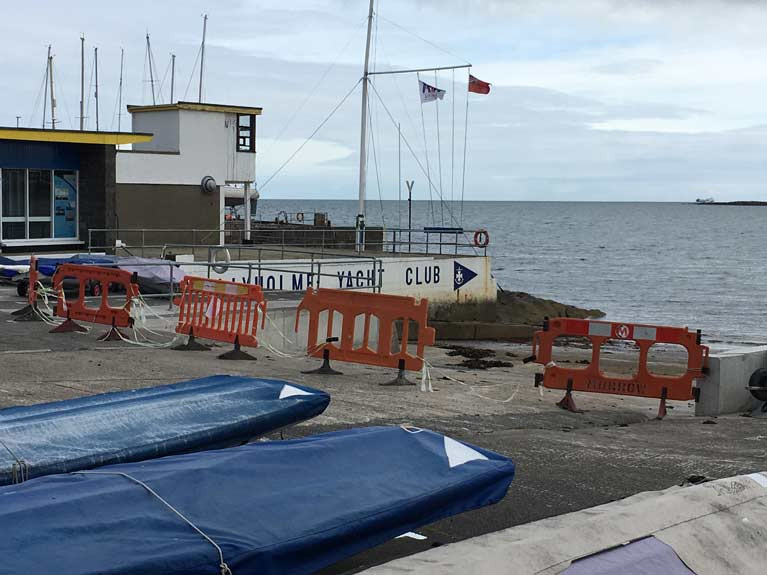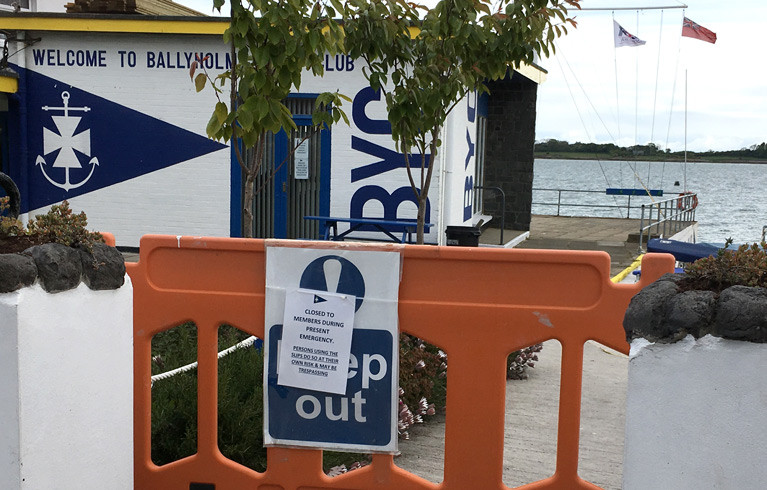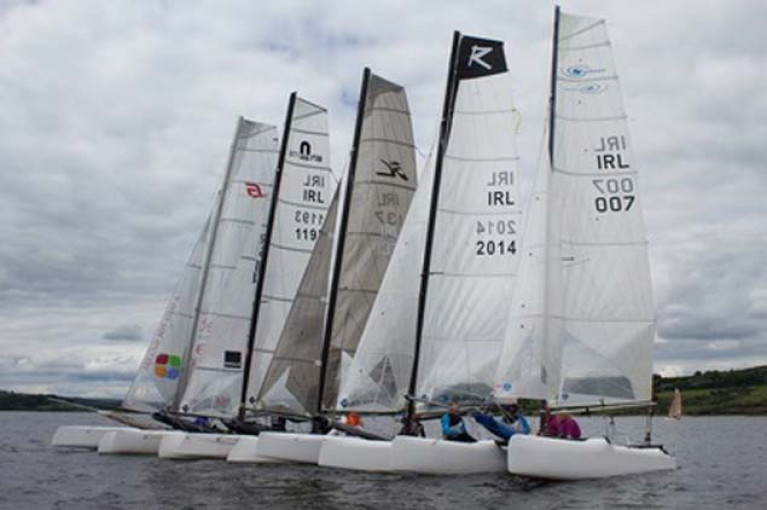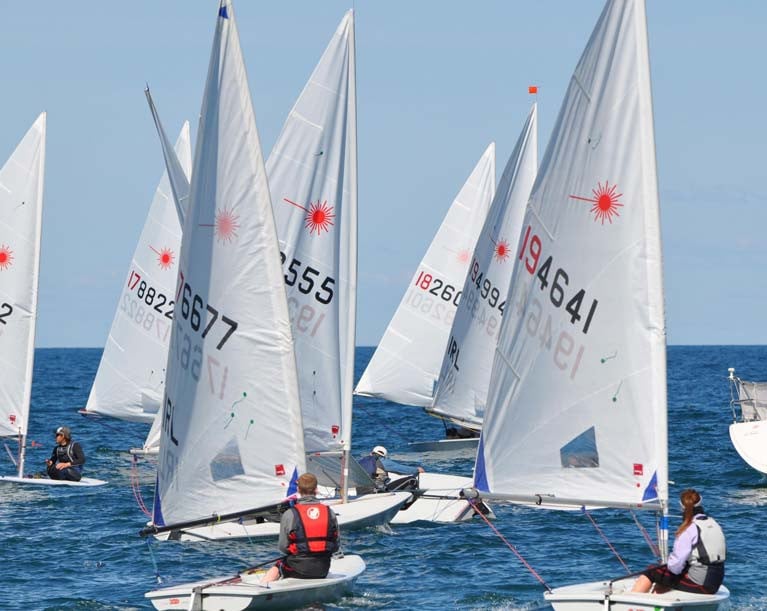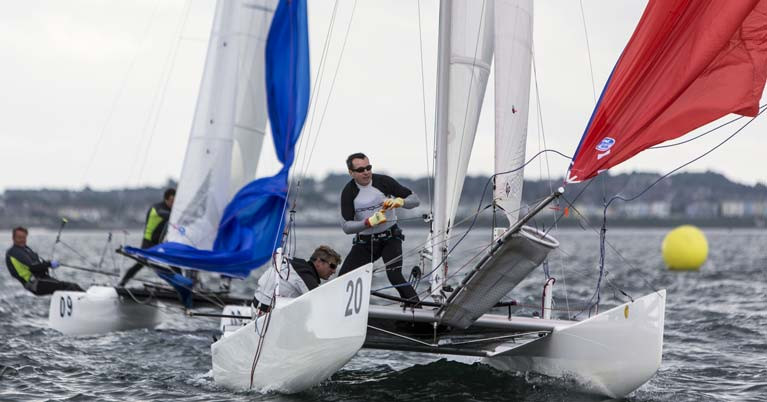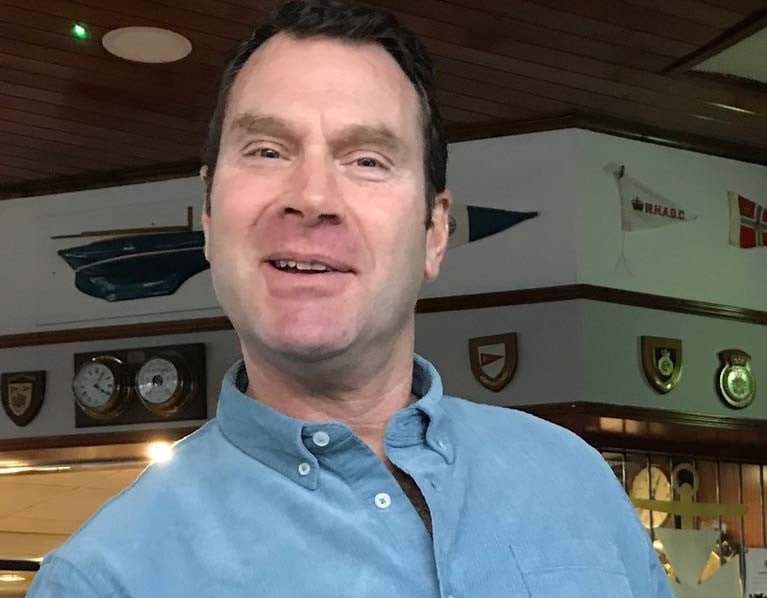Displaying items by tag: Ballyholme Yacht Club
All Change for Ballyholme Yacht Club Regatta This Weekend
Ballyholme Yacht Club on Belfast Lough has taken a big step and will hold a two-day club regatta this weekend, (1st and 2nd August), for members only, but it will be an adapted ‘regatta’, run to the new normal within both government and RYA guidelines.
It won’t, therefore, be a regatta in the usual sense in that while there will be plenty of on the water activity, there will be no regatta tea or bar in the clubhouse – so no mass sandwich-making the night before!
Prizes will be awarded in the form of vouchers for the BYC Bar, or local chandlery prizes and to make up for the lack of the all-important regatta tea, it is suggested you bring deckchairs and sandwiches. The outside bar will be open.
On Saturday morning, there will be a Cadet Regatta and Saturday afternoon will see a similar format to the current Sunday racing, but with a Committee Boat windward start. On
Sunday morning there will be a Ladies Race using the Club Picos with a briefing at 0930 and start at 1030. This must be booked online.
And for those who have any energy left, there will be a Regatta swim at 1330 and at 1500 a Stand-Up Paddleboard race starting from the South Slipway. The course will be dependent on the weather conditions, again with prizes for the speedy (and perhaps even stylish) paddlers.
Details and online booking will be available from today (29th) on the club website. At present entry appears to be for dinghies only.
Ballyholme ‘Sharks’ Return to the Bay
The Cadets at Ballyholme Yacht Club in Bangor Co Down on Belfast Lough are split into two sections; the beginners called Dolphins and those who have completed Stage 3 – Sharks. In order to reduce the numbers on the slipway and afloat at any one time, the Sharks had their turn last Saturday.
After the much-delayed return to the water due to COVID, a great turnout of 18 Toppers enjoyed a perfect morning practising racing in two groups.
In charge were RYA club coaches Colin Robinson and Andrew Dadley with RYA Instructor Russell Finlay and the safety boat was manned socially distanced by John Bell and Coach David Nelson on board.
Full Steam Ahead for Sailing in Bangor on Belfast Lough
Neighbouring clubs Royal Ulster and Ballyholme at Bangor in County Down on Belfast Lough are both due back on the water soon.
The RUYC sailing committee has decided that in line with further guidance from the RYA that competitive sport can’t start until the 17th July at the earliest, that the club will start sailing on the Saturday 18th July in the first of a series of Round Belfast Lough type courses. In August a new one round the Copeland Islands is planned. The updated sailing programme and sailing instructions for the new series of races will be available here www.ruyc.co.uk on 10th July.
Thursday night racing has been cancelled for this month (July) but as events are moving very quickly now, the August points racing will be reviewed should there be a further easement. The annual Regatta will now not be possible this Saturday (11th) as competitive sailing cannot happen until later in the month. It is hoped that a smaller-scale event will be held during September.
Short cruises in company around Belfast Lough are on the books with a start this Sunday (12th) with a short trip to Helens Bay where anchoring is possible.
Sailing Secretary Jim Coffey said “The sailing committee would like to thank members for their patience and understanding whilst we try and work our way through these difficult times; ultimately the safety of members is paramount as the pandemic is still with us".
At Ballyholme the bar will open this evening (9th)with drinks served outside with the now usual restrictions. See Ballyholme.com
And there is good news for cadets. Paul Prentice RTC (Recognised Training Centre) Principal is delighted to be able to run courses. “ Thanks to our dedicated training team, with support from RYANI, we are delighted to release our Programme for 2020”. He adds “ As you will see there are a number of changes to the format, and unfortunately, due to restrictions we are unable to offer beginners courses.
The team is excited to welcome you back on the water”.
Courses are available to book, for Members only until Friday 17th July, after which they will be opened to non-members. Please take some time to read the information online and particularly the cancellation policy and ifIf you have any questions or concerns, please give Lyn a call at the club on 028 9127 1467.
Standup Paddleboarding, Sea Swimming, Kayaking & Windsurfing To Have A Voice at Ballyholme Yacht Club
Ballyholme Yacht Club is planning to form a Sub Committee to ensure members who are interested in Standup Paddleboarding, Sea Swimming, Kayaking and Windsurfing have a voice.
Before the Lockdown the club had plans in place for a new Social SUP night on Wednesdays and were at early stages of planning a number of Open Water Swim Events over and above the Monday Night Swims.
So as a result of Zoom meetings in the meantime, a new initiative is under consideration, so the call is out for people to join the group and help shape the future of these sports at BYC.
The Rear Commodore Sailing, Rob Milligan, is a keen SUPer and Windsurfer and he has agreed to be the link between the new Sub-Committee and the Sailing Committee. The Rear Commodore Shore, Keith Storey, is an avid supporter and wants to see more events.
The ask is not a big one and to get started the club needs a group of people to help. These events don’t run themselves and if it is to work help is needed. So if you’re interested contact Lyn in the office on 028 9127 1467 or email [email protected]
The club is also working away in the background to secure equipment and provide training to offer something new in 2020.
In what will be a welcome decision by the Ballyholme Yacht Club, members will now be able to proceed, albeit slowly and patiently, towards a return to watersports.
Commodore Aidan Pounder has emailed members with the news that SportNI has specified in its Framework to guide progression towards a resumption of sport and physical recreation in Northern Ireland, that this includes swimming in open water and all forms of water - sports practised on open waterways – sailing, windsurfing, canoeing, rowing, kayaking, surfing, paddle - boarding and the use of motorised craft (in line with navigation authority guidance. He goes on to say “ I and indeed your Executive Officers fully appreciate that everyone wants to get back to some form of normality, but unfortunately, I don’t envisage this for some time. In the interim we will be embarking on a start towards this new normality with small steps, starting tomorrow (24th May) at 0900 hrs with the opening of our grounds and slipways”.
"A booking system to limit the number of sailors at the club has been implemented"
In order to make this safely workable, a booking system to limit the number of sailors at the club has been implemented within this link for 24th May, Monday 25th May and Tuesday 26th May. And within this document is the ability to book for other watersports sessions such as sea swimming, paddleboarding and windsurfing at specific times on Monday 25th and Wednesday 27th May.
In particular, sailing will be available for small groups in sessions, up to 12 can book per session, to be split between North and South parks and slipways. This is required in accordance with NI Executive guidelines. There will be no safety cover for the session
The Commodore continued “I must reiterate the guidance from the RYANI, who are correctly advocating patience to allow the necessary actions as required to be taken so that the environment is as safe as it can be for our Members, Staff and visitors”. And concludes by saying that “The Return to Water Team and Executive Committee are working hard for you and I hope that you can be patient with us as we move forward”.
In response to the pathway to recovery strategy published by the NI Executive on 12th May, the Executive Committee at Ballyholme Yacht Club on Belfast Lough is planning a return to water-based activities. With the dinghy parks dormant and the marina still closed, members will be rarin’ to get afloat as soon as possible.
Stay at Home is still the current advice and the committee supports the Five Stage plan. Therefore, the club approach to getting members back on the water will be based on both guidance provided by the NI Executive and the RYA. The priority will always be the safety of members and staff.
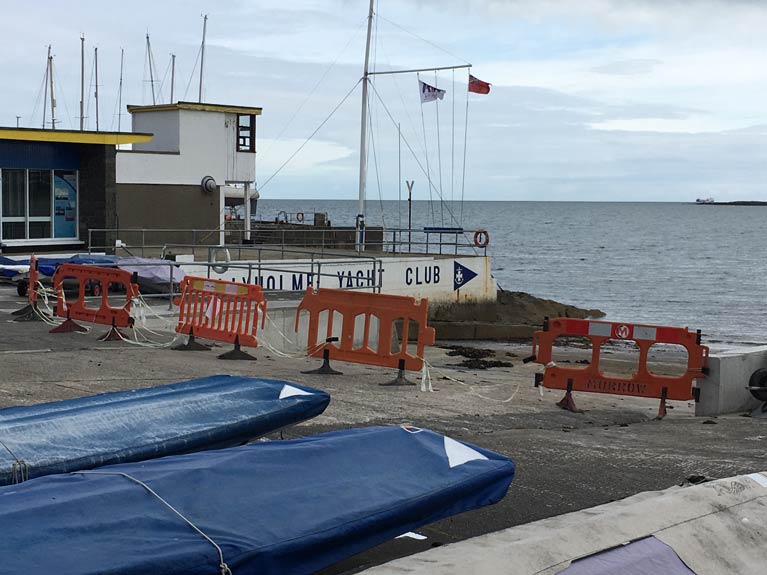 Ballyholme during Lockdown
Ballyholme during Lockdown
RYA has set up working groups and is consulting with clubs. A BYC member, Robin Gray, sits on the National RYA Return to Racing Working Party which is tasked with writing detailed guidelines for the clubs on restarting racing. A BYC COVID-19 working group will look at all club activities to assess risk, implement controls and policies, and regularly review guidelines and our procedures.
Step one of the NI Executive’s plan will allow for a return to some on-water activity which it is hoped will include sailing and will allow the slipways and dinghy parks to be opened to facilitate ‘social sailing’.
The clubhouse will not be available at this stage and sailing will be for single or double-handed boats (crewed only by members of the same household). As safety cover will not be available so sailors must be realistic about their abilities and importantly consider the sea state and weather conditions to minimise risk. Other club activities such as open water swimming, windsurfing, paddleboarding and kayaking should also be able possible under the same conditions. If all goes well and the NI Executive progresses to step two, which increases participant numbers to 10, some form of racing and cadet sailing can take place.
In the meantime, online quizzes and events for all ages have proved popular but it recognised that so much dependent on the public following the guidelines to reduce the spread of the virus and get the R number down in our community to allow us to progress through the steps.
No Speeding at Ballyholme Yacht Club in May
Yet another event at Ballyholme has been cancelled due to the COVID-19 situation. Richard Swanston, one of Ballyholme’s long time members and Chair of Irish Multihull Association, tells me that the May Weekend of Speed had to be withdrawn from the calendar.
As reported previously by Afloat, the weekend of 23 rd and 24th May should have welcomed a big fleet of Multihulls to Belfast Lough, racing as an Open fleet of Dart 18s, Dart16s, Hurricane 5.9 SXs and a highly competitive F18 fleet.
Also cancelled is this weekend’s Westerns at Galway Bay SC but Swanston is hopeful that the Eastern Championships at Wicklow in August along with the Nationals at Swords in County Dublin in September will survive.
Ballyholme's Laser Radial Euros Latest to Fall to COVID-19
Ballyholme Yacht Club was to have been the venue in early July for the huge Laser Radial European Championships but the Iatest news from the EurILCA team is that due to the COVID-19 situation and expected restrictions on travel during July and possibly August (and to help allay fears of people having to travel abroad during those months), EurILCA and Ballyholme Yacht Club have come to the very difficult decision to cancel the event this summer. This will hopefully allow EurILCA enough time to try and reschedule it elsewhere possibly in October or November at a different “warmer” venue.
Although there is virtually year-round dinghy racing at Ballyholme, the weather is too unpredictable in the Autumn for a week-long championship and the days are too short to fit in the necessary number of races.
Ballyholme has said thank you to all who applied to race there this summer; “Hopefully you will get the chance to come here in the future for a different event, or just come here on holiday – we are always happy to welcome other sailors to our club”.
In a message from EurILCA they said: “Dear sailors, due to the situation with the COVID-19, it is with great regret that Ballyholme Yacht Club and EurILCA have decided to cancel the event”.
Ballyholme Yacht Club and its volunteers have been preparing for months for this event and EurILCA has thanked them for the effort, time and energy they put in the preparation. BYC are bidding for the same event in 2023 and the EurILCA is working to find a new location to hold this 2020 event later in the season - maybe October or November 2020.
In a message, this morning event chairman Mark Mackey said “Thank you to all our supporters and volunteers who have worked on this over the past 18 months to set up what should have been a fantastic event. And to those who had already volunteered to help during the weeks of the event -there are too many to single out by name – events like these can use well over 100 volunteers – but thank you".
Ballyholme Yacht Club to Host Weekend of Speed in May
Ballyholme Yacht Club will be the venue for the Irish Multihull Association’s Weekend of Speed in mid-May.
The club has extensive experience of hosting national and international sailing events on the virtually tide and hazard free waters of Belfast Lough and it was here in 2014 that the F18 Worlds came to town. Winners then were Gunnar Larsen and Ferdinand van West from the Netherlands. The event also attracted America’s Cup sailor Glenn Ashby (afloat.ie 15/6/14).
So, over the weekend of 23rd and 24th May, the Multihulls will return in numbers, this time hopefully joined by the 49er and 29er fleets, an innovation introduced in 2018. The catamaran fleet race as an Open fleet with Dart 18, Dart16, Hurricane 5.9 SX and a highly competitive F18 fleet.
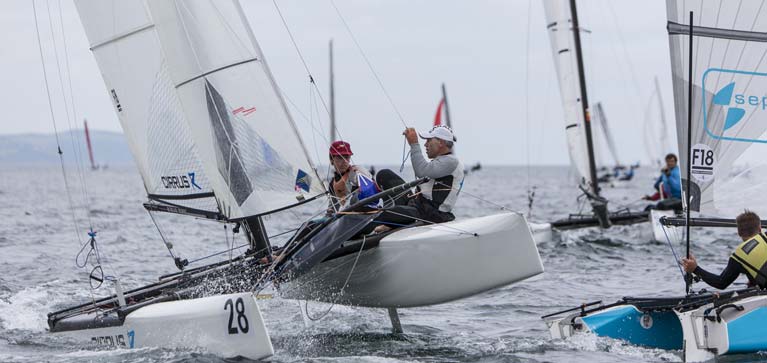
Due to the huge interest and success the event is being developed into an annual meet in association with one of the I.M.A. Regional or National calendar events, this year the Northern Championships.
The organisers welcome any high-performance skiffs with a Portsmouth Number no lower than 900, as well as RS400s, Fireballs and 505s. This could be the event of the year, a chance to see young potential Olympic talent along with Olympians and Olympic contenders on show.
PRO will be International Race Officer, local man, Robin Gray so competitors can be assured of full and fair racing.
A full social programme is planned, and visitors will find smart refurbished and extended changing facilities which include a spacious changing area for disabled people.
There is ample car parking and with the dinghy park extension, plenty of boat space. Camping on site is also available.
Further enquiries to Ballyholme Y.C. +44 (0) 28 9127 1467 or email [email protected], +44 (0)7878 643426.
Storey is 'Mug of the Day' Winner at Ballyholme Pre-Icebreaker Sprint on Belfast Lough
Ballyholme Yacht Club was one of the first to organise winter sailing on Belfast Lough way back in the seventies. It’s called the Icebreaker and in the past, it has indeed at times involved breaking ice on boat cover.
The series is supported by Charles Hurst Jaguar and Part 2 starts on Sunday, February 2nd. But to revive the enthusiasm last Saturday the club held the first of a Pre-Icebreaker Winter Sprint Races for Toppers, Lasers, Large and Small dinghies and Catamarans in aid of the RNLI.
For the 29 strong fleet, the proposed format was six one lap windward-leeward races for the three fleets in this instance, Toppers and Laser 4.7s in the Low PY, large PY handicap and the Laser Radials and Standards.
Gusts over 20 knots played havoc with the fleets in the first two races, with some shifts downwind taking their toll. Only a couple of boats didn’t succumb to a capsize.
David Nelson won the Laser Standards. He showed his speed in the heavier airs with clear starts and it was a generally a competition between himself and Dan McGaughey in the Radial to get to the top mark first. Chris Boyd caught up on the down winds although most of the fleet were well behind the first two. After a late start and a DNF in Race 1 and another late start in the second, Mark Mackey managed to split Nelson and McGaughey in the third and then, after a clean start in the final, was first to the windward mark with a gap big enough to contend with the disappearance of the wind to allow him to finish in front of McGaughey who was the Laser Radial winner. Thereafter racing was cancelled as the wind had shut off and the Rescue boats crews were feeling the cold. The Toppers showed great skill in surviving all four races, managing to get the last race in before the wind disappeared. Some struggled with the shifting winds and one gust took out nearly the whole fleet near the windward mark in the third race. The winner was Conor Allen. And top of the 4.7 fleet was Lucas Nixon.
Only two Large PY turned out and they survived two races before they sensibly came ashore due to the cold strong winds.
The traditional ‘Mug of the Day’ went to Keith Storey for his three capsizes and wrapping his main sheet around one of the leeward gate marks.
A worthwhile exercise to encourage the fleet out again for the 10-week Icebreaker open event starting on in just a week’s time on 2nd February.




























